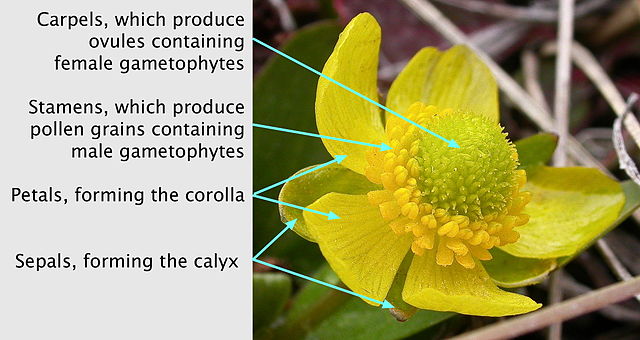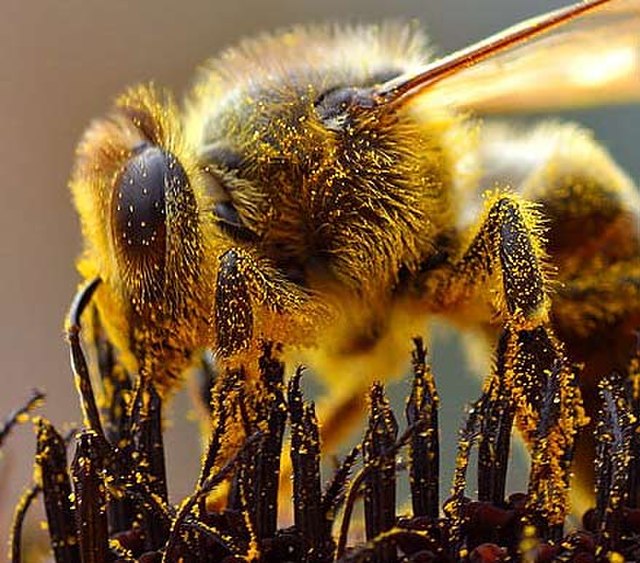Plant reproductive morphology
Plant reproductive morphology is the study of the physical form and structure of those parts of plants directly or indirectly concerned with sexual reproduction.
Close-up of a flower of Schlumbergera (Christmas or Holiday Cactus), showing part of the gynoecium (the stigma and part of the style is visible) and the stamens that surround it
Dioicous gametophytes of the liverwort Marchantia polymorpha. In this species, gametes are produced on different plants on umbrella-shaped gametophores with different morphologies. The radiating arms of female gametophores (left) protect archegonia that produce eggs. Male gametophores (right) are topped with antheridia that produce sperm.
Flower of Ranunculus glaberrimus
Alnus serrulata has unisexual flowers and is monoecious. A pair of maturing male-flower catkins are on the right; female catkins (of the previous year) on the left.
A flower, also known as a bloom or blossom, is the reproductive structure found in flowering plants. Flowers consist of a combination of vegetative organs – sepals that enclose and protect the developing flower, petals that attract pollinators, and reproductive organs that produce gametophytes, which in flowering plants produce gametes. The male gametophytes, which produce sperm, are enclosed within pollen grains produced in the anthers. The female gametophytes are contained within the ovules produced in the carpels.
Reproductive parts of Easter Lily (Lilium longiflorum). 1. Stigma, 2. Style, 3. Stamens, 4. Filament, 5. Petal
The calla lily is not a single flower. It is actually an inflorescence of tiny flowers pressed together on a central stalk that is surrounded by a large petal-like bract.
Grains of pollen sticking to this bee will be transferred to the next flower it visits.
Ophrys apifera, a bee orchid, which has evolved over many generations to mimic a female bee.








